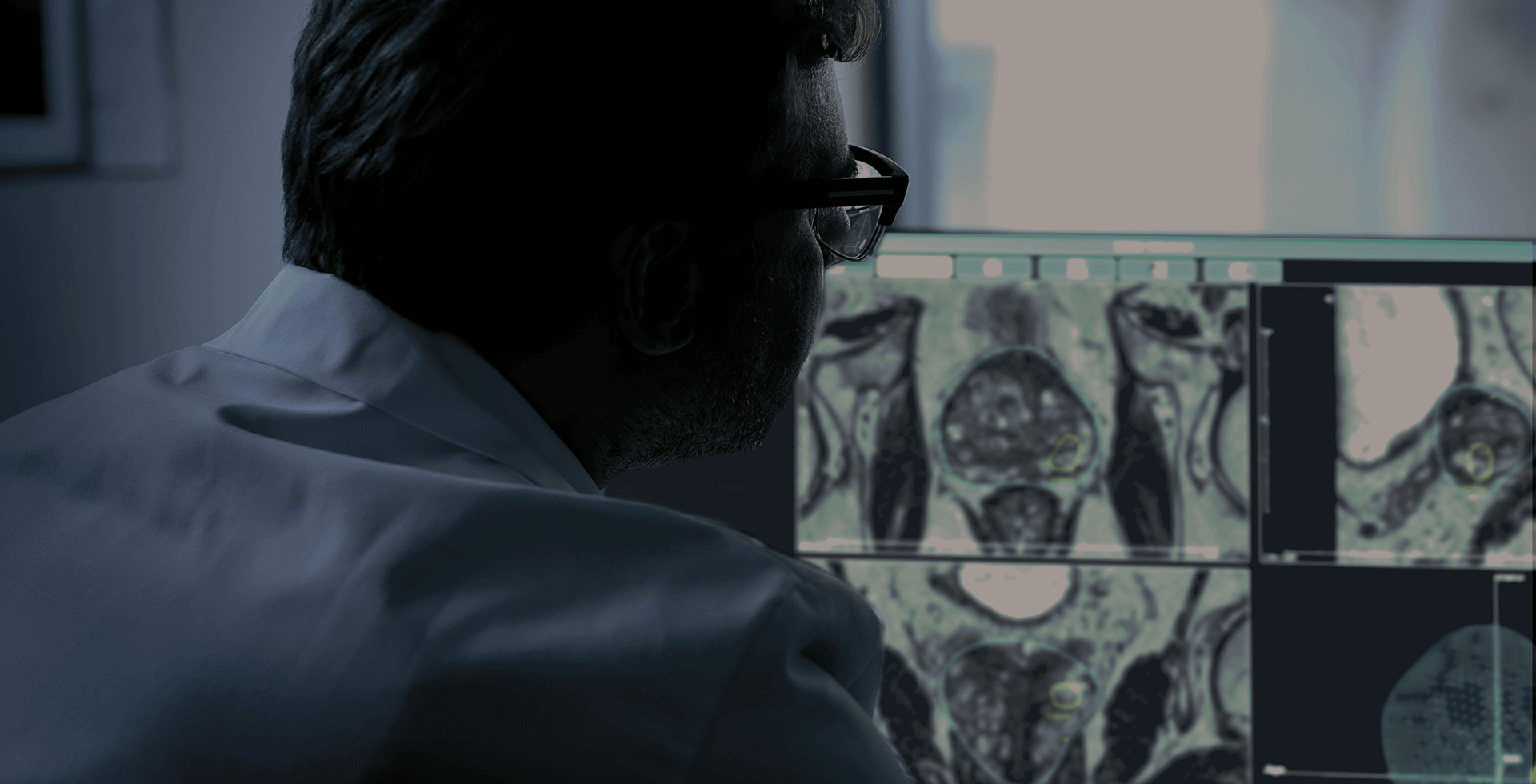
Since 2021, european guidelines recommend performing transperineal bioipsies rather than transrectal prostate biopsies. This approach is increasingly favored by physicians seeking patient-oriented practices to adhere to guidelines and improve prostate cancer detection and treatment.
In this article, we will explore the advantages of transperineal prostate biopsies with some concrete examples and feedback from urologists who have adopted this approach.
Transrectal prostate biopsies show some limits…
Transrectal prostate biopsies are today the most common approach for diagnosing prostate cancer worldwide. While they can be performed under local or general anesthesia, as well as with elastic fusion, these biopsies facilitate sampling of the posterior surface of the prostate but present limitations for the anterior zone.
This is not the only limit with transrectal approach. First of all, since the European guidelines encourage urologists to switch to transperineal approach, the transrectal route has a bad image. However, this approach has limitations, including an increasing resistance rate of enteric bacteria, as demonstrated by a study led by Korkmaz in 2019. Today, the primary issue with transrectal prostate biopsies is the risk of infection despite antibiotic prophylaxis. This is why physicians are looking for alternatives.
Limits overcome by the transperineal prostate biopsies under local anesthesia
These limits and the evolutions of international guidelines led the physician to adopt a procedure with the following benefits:
- Avoidance of antibiotic
- Reduction of infection
- Potential ambulatory implementation
- Reliable cancer detection
And this procedure already exists: it is the transperineal MRI fusion biopsy under local anesthesia.
Transperineal prostate biopsy is now the approach recommended in the European guidelines. Performed under local or general anesthesia, it shows less infection, no need of antibiotic, access to anterior targets, tolerable pain level… Advantages are clear to see.
Since several years, local anesthesia has developed. As the procedure is quite quick, it is less invasive for the patient and it can be office-based. Some studies have shown than the cancer detection rate is good and precision is high. These two aspects are crucial for a good diagnosis of prostate cancer.
Why to Switch from transrectal to transperineal prostate biopsy?
As transperineal approach is the new standard for prostate biopsies, many urologists would switch from transrectal to transperineal route and change their habits. Generally, if physicians are used to perform transrectal biopsies, the learning curve for transperineal procedures is very short*.
This approach reduces the infection risk which has been rising over the last decade (reaching 7-8 %). For example, Dr Nis Norgaard, from Herlev Hospital in Copenhagen (Denmark), is using transperineal prostate biopsy has performed over 650 procedures and only 0.5% have been accepted to the hospital after the biopsy, but not for any septicemia*.
This approach is also a first step to focal therapies as they are today performing through transperineal route. It is so the occasion to go further in personalized patient journey for prostate cancer, from diagnosis to treatment.
Why choosing Koelis Trinity?
Today, there are several systems in the market, with all their advantages and disadvantages. Each physician can find the system that fits him. At Koelis, we have developed an equipment for urologists, and especially, for prostate care specialists. Koelis Trinity® allows to perform transrectal and transperineal prostate biopsy, under local or general anesthesia.
It integrates a fusion software and a 3D mapping that allows to compensate for patient and prostate movement and improve the accuracy of the diagnosis. The 3D probes allow to see the entire prostate on the live ultrasound image, ideal to reach “hidden” zone. According to Dr Günzel (Germany), the patented technology Organ-Based Tracking® allows the superposition of MRI and US images to precisely show the target in a 3D cartography. Images are deformed to match the prostate shape, ensuring high fusion accuracy*. Koelis Trinity® and its technologies have been imagined and designed to fit clinicals needs obtained after several scientific researches. This is what brings the real added value of Koelis Trinity® system**.
According to Dr Nis Noregaard (Denmark), from the patient entrance until the procedure is complete, it takes about 15 to 20 minutes with local anesthasia, disinfection of the skin, planning and biopsies*.
As transperineal biopsies are now recommended by guidelines and many studies have shown the advantages of it during latest years, their benefits no longer need to be demonstrated. However, we have to insist on the fact that implementing the transperineal approach in healthcare establishments is not insurmountable if are well supported and if the chosen system meets your needs. Feel free to contact us if you need more information.
Sources :
* https://www.youtube.com/watch?v=8JArJMvor7Q
** https://koelis.com/events-details/transperineal-mri-us-fusion-biopsy-in-local-anesthesia-the-diagnostics-of-the-future/
 United States
United States


